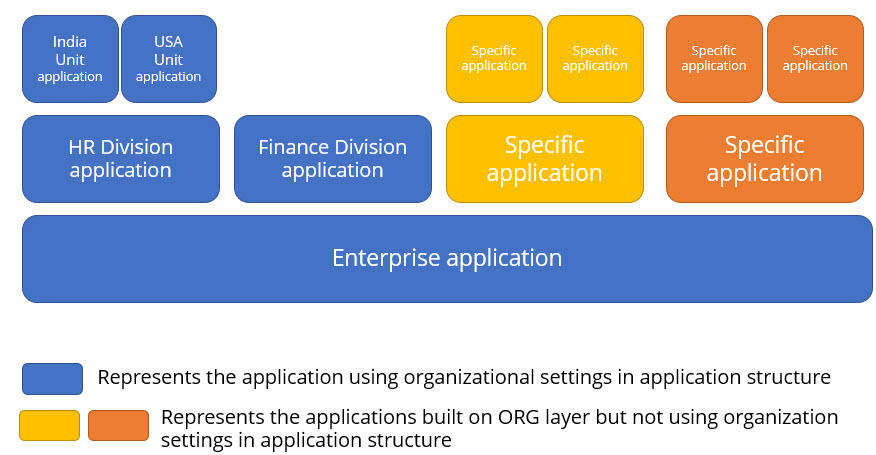
Application structure
A Pega application is a bundle of rules packaged to perform a specific functionality. Each application should be designed to perform a single functionality - this is a modular application. All modular applications are then stacked together (in an application structure) to fulfill business goals.
When developing an application, consider the following:
- Business goals and objectives
- People involved in the business process
- Data involved in the business process
- Reusable elements
Business goals determine the application to be created. People and data determine where the application should be placed in the stack, and reusable elements help promote modular reuse architecture.
Framework and Implementation
As an LSA, you play an important role in deciding a Pega application's structure. People, data, and reusable elements are influential factors in finalizing the application structure.
The new application wizard provides two application structure options:
- Framework
- Implementation
A framework structure application acts as a template for constructing implementation applications. Frameworks are generally abstract and serve as blueprints for implementation applications. However, frameworks should not be used for packaging the common code or rules required across the organization. Avoid choosing the framework option for the sake of future-proofing. In Pega software, a framework represents an entire layer by itself. Extra effort is required to build and maintain a framework application. That additional time cannot be justified without clear evidence of why a monolithic framework application or layer is necessary.
Framework structure applications can only use 'ORG's from the organization setting, and so frameworks are always built only at the 'ORG' layer.
An implementation structure application can refer to any type of application other than a framework structure application. An implementation application cane be built on a framework application, and the term 'implementation application' can apply to a reuse layer application that is not a framework application. The best practice is to have smaller, special-purpose implementation structure applications that are considered modular.
Implementation structure applications can use 'ORG', 'Division', and 'Unit' from the organization setting to create applications for a specific line of business in the organizational hierarchy. Implementation applications can be built in different layers without including 'Division' and 'Unit' organization settings.
Using organizational settings helps manage access and handle line-of-business-specific assets.
The following figure shows an example of the different layers of an enterprise application's structure:
An example class structure unit application with that structure looks like ORG-HR-India-AppName-Work-CaseType; ORG-HR-USA-AppName-Work-CaseType.
In comparison, applications without organization settings will have the ORG-AppName-Work-CaseType class at any layer.
Check your knowledge with the following interaction:
This Topic is available in the following Module:
If you are having problems with your training, please review the Pega Academy Support FAQs.
Want to help us improve this content?
